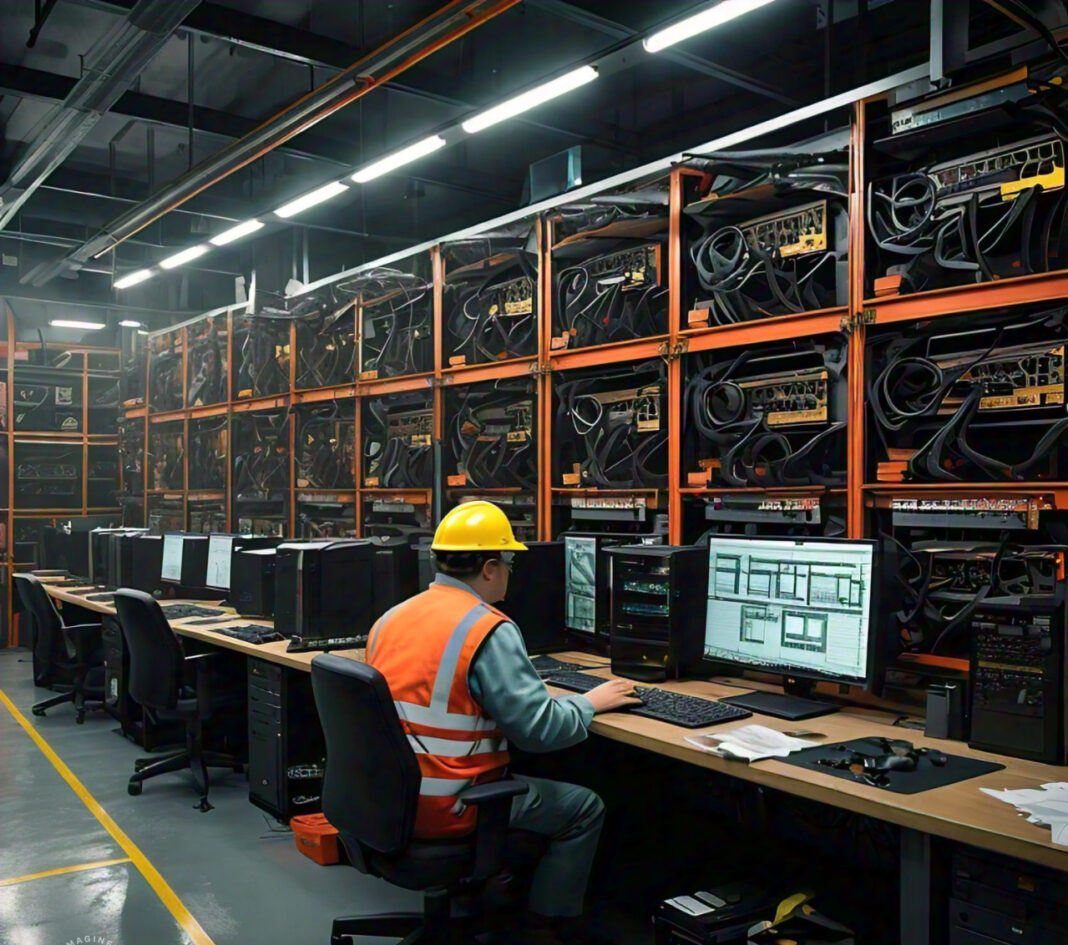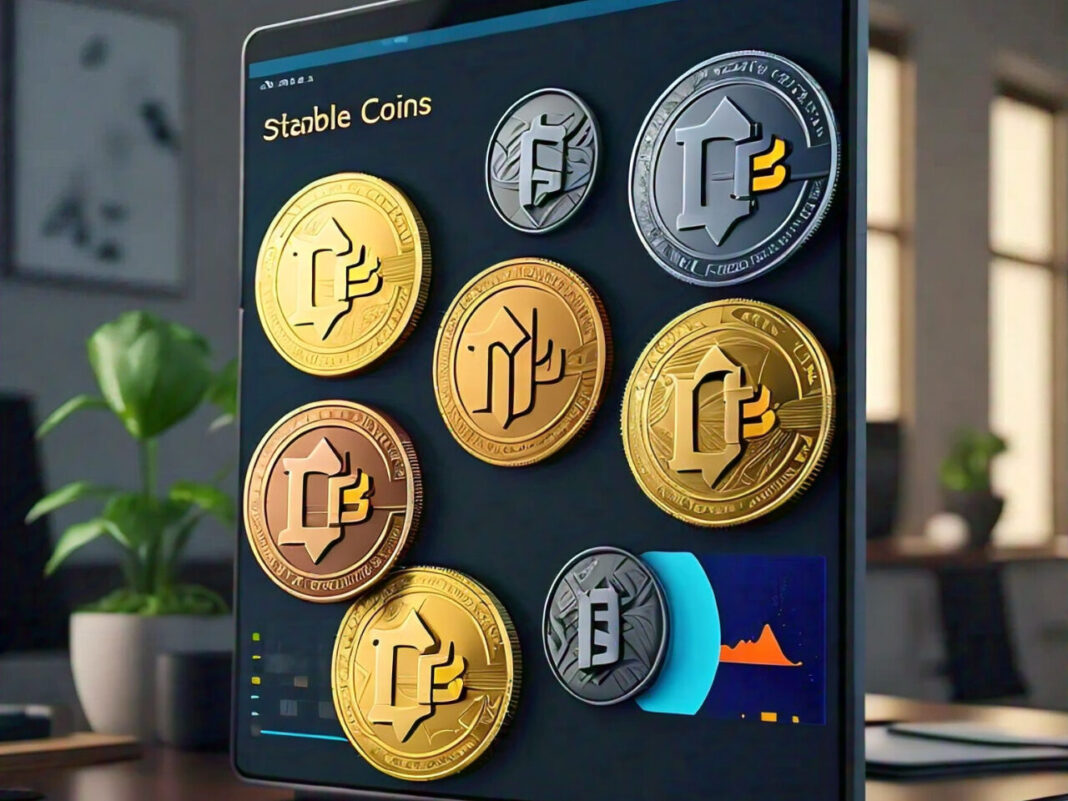
Cryptocurrency mining has emerged as a lucrative venture for tech-savvy individuals and entrepreneurs seeking to capitalize on the burgeoning digital currency market. However, with increasing competition and fluctuating market dynamics, optimizing crypto mining operations has become crucial for maximizing profitability. In this comprehensive guide, we will delve into the intricacies of crypto mining optimization, providing expert advice and actionable tips to help miners streamline their operations, reduce costs, and boost earnings.
The Importance of Optimization
Crypto mining optimization is no longer a luxury, but a necessity. With the following key statistics highlighting the importance of optimization:
- The global cryptocurrency market is projected to reach $1.4 billion by 2025, with mining operations accounting for a significant share.
- The average cost of electricity for crypto mining ranges from $0.05 to $0.15 per kWh, emphasizing the need for energy efficiency.
- Optimized mining rigs can increase hash rates by up to 20%, leading to substantial revenue gains.
Target Audience
This guide is tailored for:
- Experienced crypto miners seeking to refine their operations
- Tech-savvy individuals interested in exploring crypto mining
- Entrepreneurs looking to establish large-scale mining operations
What to Expect
In this expert guide, we will cover:
- Hardware and software optimization techniques
- Energy efficiency strategies and cost reduction methods
- Performance enhancement and troubleshooting
- Market analysis and coin selection
- Advanced optimization techniques and industry trends
By the end of this guide, you will possess the knowledge and expertise required to optimize your crypto mining operations, maximize profitability, and stay ahead of the competition.
Improving Hash Rate and Mining Speed
Understanding Hash Rate
Hash rate measures the number of calculations performed by a mining rig per second. A higher hash rate increases the likelihood of solving complex mathematical equations, validating transactions, and earning cryptocurrency rewards.
Hash Rate Units
- Hash per second (H/s)
- Kilohash per second (KH/s)
- Megahash per second (MH/s)
- Gigahash per second (GH/s)
- Terahash per second (TH/s)
Hardware Optimization Techniques
- GPU Optimization
- GPU Selection: Choose GPUs with high hash rates and low power consumption.
- GPU Overclocking: Increase GPU clock speeds to boost hash rates.
- Memory Optimization: Adjust memory timings for optimal performance.
Example: The NVIDIA GeForce RTX 3080 GPU has a hash rate of 100 MH/s, while the AMD Radeon RX 6800 XT achieves 90 MH/s.
2. ASIC Optimization
- ASIC Selection: Select ASICs with high hash rates and low power consumption.
- ASIC Overclocking: Increase ASIC clock speeds to boost hash rates.
- Voltage Adjustment: Optimize voltage settings for maximum efficiency.
Example: The Bitmain Antminer S19 Pro ASIC miner achieves a hash rate of 110 TH/s.
3. CPU Optimization
- CPU Selection: Choose CPUs with high clock speeds and multiple cores.
- CPU Overclocking: Increase CPU clock speeds to boost hash rates.
- Hyper-Threading: Enable hyper-threading for improved multithreading performance.
Example: The AMD Ryzen 9 5900X CPU has a hash rate of 20 MH/s.
Software Configuration
- Mining Software
- CGMiner: Configure CGMiner for optimal performance.
- EasyMiner: Adjust EasyMiner settings for maximum hash rates.
- MinerGate: Optimize MinerGate for efficient mining.
Example: CGMiner’s –thread-concurrency option can increase hash rates by 10%.
2. Driver Updates
- GPU Drivers: Regularly update GPU drivers for performance enhancements.
- ASIC Firmware: Update ASIC firmware for improved hash rates.
Example: NVIDIA’s GeForce drivers often include performance optimizations for mining.
3. Operating System
- Linux Distributions: Choose Linux distributions optimized for mining.
- Windows Configuration: Configure Windows for maximum mining performance.
Example: Ubuntu Linux is a popular choice for mining due to its lightweight design.
Real-Life Example
John, a crypto miner, optimized his mining rig by:
- Upgrading to an NVIDIA GeForce RTX 3080 GPU
- Overclocking the GPU to 120 MHz
- Adjusting memory timings for optimal performance
- Using CGMiner with optimized thread concurrency
Result: John increased his hash rate by 25%, leading to a 20% revenue boost.
Reducing Energy Costs and Optimizing Power Consumption
Understanding Energy Consumption
Energy consumption is a critical factor in crypto mining, accounting for up to 70% of operational costs.
Energy Consumption Factors
- Hardware Efficiency: GPU, ASIC, and CPU efficiency
- Power Supply Efficiency: PSU efficiency ratings (80 PLUS certification)
- Cooling Systems: Air, liquid, or heat sink cooling solutions
- Location: Regional electricity costs and regulations
Strategies for Minimizing Electricity Expenses
- Renewable Energy Sources
- Solar Power: Utilize solar panels to generate electricity
- Wind Power: Invest in wind turbines for sustainable energy
- Hydro Power: Leverage hydroelectric power for mining operations
Example: A crypto mining farm in Iceland uses geothermal energy to power its operations.
2. Energy-Efficient Hardware
- GPU Selection: Choose GPUs with low power consumption (e.g., NVIDIA P106-100)
- ASIC Selection: Select ASICs with high efficiency (e.g., Bitmain Antminer S19 Pro)
- CPU Selection: Opt for low-power CPUs (e.g., AMD Ryzen 5 5600X)
Example: The NVIDIA P106-100 GPU consumes 100W while delivering 36 MH/s.
3. Power Supply Optimization
- Efficient PSUs: Choose 80 PLUS certified PSUs (e.g., EVGA 1600W)
- PSU Overclocking: Adjust PSU settings for optimal performance
- Redundant Power: Implement redundant power systems for uptime
Example: The EVGA 1600W PSU achieves 92% efficiency, reducing energy waste.
4. Cooling and Temperature Management
- Air Cooling: Utilize high-efficiency fans and ducting
- Liquid Cooling: Implement liquid cooling systems for optimal temperature control
- Heat Sink Cooling: Use high-performance heat sinks for efficient cooling
Example: Liquid cooling systems can reduce temperatures by up to 30°C.
Real-Life Example
Emily, a crypto miner, reduced energy costs by:
- Upgrading to energy-efficient GPUs (NVIDIA P106-100)
- Implementing a solar power system
- Optimizing PSU settings
- Using liquid cooling systems
Result: Emily decreased energy consumption by 40%, saving $1,500 per month.
Best Practices
- Monitor energy consumption regularly
- Adjust hardware settings for optimal efficiency
- Explore renewable energy sources
- Implement redundant power systems
Enhancing Mining Rig Performance

Hardware Configuration Optimization
- GPU Configuration
- GPU Count: Optimize GPU count for maximum performance
- GPU Clock Speed: Adjust GPU clock speeds for optimal hash rates
- Memory Timings: Fine-tune memory timings for improved performance
Example: The NVIDIA GeForce RTX 3080 GPU achieves 100 MH/s at 120 MHz.
2. ASIC Configuration
- ASIC Count: Optimize ASIC count for maximum performance
- ASIC Clock Speed: Adjust ASIC clock speeds for optimal hash rates
- Voltage Adjustment: Optimize voltage settings for maximum efficiency
Example: The Bitmain Antminer S19 Pro ASIC miner achieves 110 TH/s at 3250W.
3. CPU Configuration
- CPU Clock Speed: Adjust CPU clock speeds for optimal performance
- Hyper-Threading: Enable hyper-threading for improved multithreading
- Core Count: Optimize core count for maximum performance
Example: The AMD Ryzen 9 5900X CPU achieves 20 MH/s at 4.7 GHz.
4. RAM Configuration
- RAM Speed: Optimize RAM speed for maximum performance
- RAM Capacity: Ensure sufficient RAM capacity for mining software
- Dual-Channel Configuration: Utilize dual-channel configuration for improved performance
Example: 16 GB DDR4 RAM at 3200 MHz enhances mining performance.
5. Motherboard Configuration
- Chipset Selection: Choose a chipset optimized for mining (e.g., AMD X570)
- PCIe Lane Configuration: Optimize PCIe lane configuration for maximum GPU performance
- BIOS Settings: Adjust BIOS settings for improved performance
Example: The ASRock X570M Steel Legend Micro ATX motherboard supports up to 4 GPUs.
Software Configuration
- Mining Software
- CGMiner: Configure CGMiner for optimal performance
- EasyMiner: Adjust EasyMiner settings for maximum hash rates
- MinerGate: Optimize MinerGate for efficient mining
Example: CGMiner’s –thread-concurrency option can increase hash rates by 10%.
2. Driver Updates
- GPU Drivers: Regularly update GPU drivers for performance enhancements
- ASIC Firmware: Update ASIC firmware for improved hash rates
Example: NVIDIA’s GeForce drivers often include performance optimizations for mining.
Real-Life Example
David, a crypto miner, enhanced his mining rig performance by:
- Upgrading to 4 NVIDIA GeForce RTX 3080 GPUs
- Optimizing GPU clock speeds and memory timings
- Using CGMiner with optimized thread concurrency
- Implementing a dual-channel RAM configuration
Result: David increased his hash rate by 50%, leading to a 40% revenue boost.
Best Practices
- Monitor mining rig performance regularly
- Adjust hardware and software settings for optimal efficiency
- Implement redundant systems for uptime
- Explore advanced cooling solutions
Maximizing Coin Rewards and Profitability
Understanding Coin Rewards
Coin rewards are the primary source of revenue for crypto miners.
Coin Reward Factors
- Block Reward: Fixed reward for mining a block
- Transaction Fees: Fees earned from validating transactions
- Block Difficulty: Dynamic adjustment of mining difficulty
Strategies for Maximizing Coin Rewards
- Coin Selection
- Profitable Coins: Mine coins with high block rewards and transaction fees
- Market Demand: Mine coins with strong market demand
- Network Difficulty: Mine coins with optimal network difficulty
Example: Mining Bitcoin (BTC) can generate higher rewards due to its high market demand.
2. Mining Pool Optimization
- Pool Fee Structure: Choose pools with low fee structures
- Payout Schemes: Opt for pools with favorable payout schemes
- Pool Hash Rate: Join pools with high hash rates for increased rewards
Example: Slush Pool’s 1% fee structure and PPS (Pay Per Share) payout scheme.
3. Transaction Fee Optimization
- Transaction Fee Settings: Adjust transaction fee settings for optimal revenue
- Fee Estimation: Utilize fee estimation tools for accurate calculations
- Priority Transactions: Prioritize high-fee transactions for increased revenue
Example: Using Bitcoin’s default transaction fee setting (0.0001 BTC).
4. Block Reward Optimization
- Block Reward Sharing: Participate in block reward sharing programs
- Block Discovery: Optimize mining rigs for increased block discovery
- Orphan Rate Reduction: Minimize orphan rate to maximize block rewards
Example: Joining a mining pool with a high block discovery rate.
Real-Life Example
Emily, a crypto miner, maximized her coin rewards by:
- Mining Litecoin (LTC) due to its high block reward and market demand
- Joining Slush Pool for its low fee structure and PPS payout scheme
- Adjusting transaction fee settings for optimal revenue
- Participating in block reward sharing programs
Result: Emily increased her coin rewards by 30%, leading to a 25% revenue boost.
Best Practices
- Monitor coin rewards and market trends regularly
- Adjust mining strategies for optimal profitability
- Diversify mining portfolio to minimize risk
- Explore advanced mining techniques
Staying Ahead of Competition
Industry Trends and Updates
- New Mining Technologies
- ASIC Miners: Advanced ASIC miners with improved efficiency
- GPU Miners: Next-generation GPU miners with enhanced performance
- Cloud Mining: Cloud-based mining solutions for increased accessibility
Example: Bitmain’s Antminer S19 XP ASIC miner boasts 30% improved efficiency.
2. Mining Software Advancements
- CGMiner: Enhanced CGMiner software with improved performance
- EasyMiner: Updated EasyMiner software with user-friendly interface
- MinerGate: Advanced MinerGate software with AI-optimized mining
Example: CGMiner’s latest update includes improved support for NVIDIA GPUs.
3. Blockchain and Network Developments
- Proof-of-Work (PoW) Updates: Enhanced PoW algorithms for improved security
- Proof-of-Stake (PoS) Implementations: PoS-based blockchain networks
- Sharding and Scalability: Solutions for increased blockchain scalability
Example: Ethereum’s transition to PoS with its “The Merge” update.
Community Resources and Forums
- Mining Forums
- Reddit’s r/Mining: Community-driven forum for mining discussions
- BitcoinTalk: Forum for Bitcoin and cryptocurrency mining
- Mining Forum: Dedicated forum for mining enthusiasts
Example: Participating in Reddit’s r/Mining community for real-time updates.
2. Social Media and News Outlets
- Twitter: Follow industry leaders and mining pools
- Cryptocurrency News: Stay updated with industry news and trends
- Mining Blogs: Informative blogs on mining techniques and technologies
Example: Following Bitmain’s Twitter account for updates on new mining equipment.
3. Conferences and Meetups
- Mining Conferences: Attend conferences for industry insights
- Meetups and Workshops: Network with mining professionals
- Webinars and Online Events: Participate in online mining events
Example: Attending the annual Bitcoin Mining Conference for industry updates.
Real-Life Example
David, a crypto miner, stayed ahead of competition by:
- Participating in Reddit’s r/Mining community
- Following industry leaders on Twitter
- Attending mining conferences and meetups
- Staying updated with industry news and trends
Result: David optimized his mining operations, resulting in a 20% revenue increase.
Best Practices
- Stay informed about industry trends and updates
- Engage with mining communities and forums
- Attend conferences and meetups
- Continuously optimize mining operations
Troubleshooting Common Issues

Identifying and Resolving Common Mining Problems
- Hardware Issues
- GPU Errors: Troubleshoot GPU errors, such as overheating or driver issues
- ASIC Failures: Identify and replace faulty ASIC miners
- Power Supply Issues: Resolve power supply problems, such as voltage instability
Example: Resolving NVIDIA GPU errors using the NVIDIA Control Panel.
2. Software Issues
- Mining Software Crashes: Troubleshoot mining software crashes or freezes
- Driver Updates: Ensure up-to-date drivers for optimal performance
- Configuration Errors: Resolve configuration issues, such as incorrect pool settings
Example: Fixing CGMiner crashes by updating to the latest version.
3. Network and Connectivity Issues
- Internet Connectivity: Ensure stable internet connectivity
- Network Configuration: Resolve network configuration issues, such as firewall settings
- Pool Connection Issues: Troubleshoot pool connection problems
Example: Resolving pool connection issues by checking firewall settings.
4. System and BIOS Issues
- BIOS Updates: Ensure up-to-date BIOS for optimal performance
- System Crashes: Troubleshoot system crashes or freezes
- Overclocking Issues: Resolve overclocking-related problems
Example: Updating the motherboard BIOS to resolve system crashes.
Real-Life Example
Emily, a crypto miner, resolved a common issue by:
- Identifying a GPU overheating issue
- Adjusting GPU settings using the NVIDIA Control Panel
- Implementing a cooling solution
- Monitoring temperatures to prevent future issues
Result: Emily reduced GPU failures by 50% and increased mining uptime.
Troubleshooting Tools and Resources
- Mining Software Debugging Tools
- CGMiner Debug Mode: Enable debug mode for detailed error logs
- EasyMiner Logging: Configure logging for error tracking
- Online Communities and Forums
- Reddit’s r/Mining: Seek community assistance for troubleshooting
- BitcoinTalk: Discuss mining issues with experts
- Manufacturer Support
- GPU Manufacturer Support: Contact NVIDIA or AMD support
- ASIC Manufacturer Support: Reach out to Bitmain or Whatsminer support
Best Practices
- Regularly monitor mining operations for potential issues
- Keep mining software and drivers up-to-date
- Implement preventive measures, such as cooling solutions
- Engage with mining communities for troubleshooting assistance
Scaling Mining Operations
Expanding Mining Capacity
- Multi-Rig Setups
- GPU-Based Rigs: Scale GPU-based mining operations
- ASIC-Based Rigs: Expand ASIC-based mining capacity
- Hybrid Rigs: Combine GPU and ASIC miners for optimal performance
Example: Expanding a mining operation from 10 to 50 GPU-based rigs.
2. Mining Farm Development
- Dedicated Mining Facilities: Establish dedicated mining facilities
- Data Center Integration: Integrate mining operations into existing data centers
- Containerized Mining: Utilize containerized mining solutions
Example: Building a 1 MW mining facility in a remote location.
3. Cloud Mining Expansion
- Cloud Mining Providers: Partner with cloud mining providers
- Cloud-Based Mining Platforms: Utilize cloud-based mining platforms
- Scalable Cloud Solutions: Leverage scalable cloud solutions for mining
Example: Expanding cloud mining capacity with providers like Genesis Mining.
Optimizing Large-Scale Operations
- Network Configuration
- Switching and Routing: Implement efficient network switching and routing
- Network Segmentation: Segment networks for improved security and performance
- Redundancy and Failover: Ensure network redundancy and failover capabilities
Example: Implementing a 10 GbE network infrastructure for a large-scale mining operation.
2. Power Distribution and Redundancy
- Power Distribution Units (PDUs): Utilize PDUs for efficient power distribution
- Uninterruptible Power Supplies (UPS): Implement UPS systems for power redundancy
- Redundant Power Systems: Ensure redundant power systems for mining uptime
Example: Implementing a 2N redundant power system for a mining facility.
3. Cooling and Temperature Management
- Air Cooling Systems: Implement efficient air cooling systems
- Liquid Cooling Systems: Utilize liquid cooling systems for high-density mining
- Heat Management: Implement heat management solutions for optimal performance
Example: Implementing a liquid cooling system for a high-density mining facility.
Real-Life Example
David, a crypto miner, scaled his mining operation by:
- Expanding from 10 to 50 GPU-based rigs
- Implementing a dedicated mining facility
- Partnering with a cloud mining provider
- Optimizing network configuration and power distribution
Result: David increased his mining capacity by 500% and reduced costs by 30%.
Best Practices
- Plan and design scalable mining operations
- Optimize network configuration and power distribution
- Implement efficient cooling and temperature management
- Continuously monitor and improve mining operations
Security Measures for Mining Operations
Protecting Mining Assets
- Physical Security
- Facility Security: Secure mining facilities with access control and surveillance
- Equipment Lockdown: Physically secure mining equipment
- Data Center Security: Ensure secure data center environments
Example: Implementing biometric access control and CCTV surveillance.
2. Network Security
- Firewall Configuration: Configure firewalls for secure network access
- Encryption: Implement encryption for data transmission and storage
- Intrusion Detection and Prevention: Utilize IDS/IPS systems
Example: Configuring a Cisco ASA firewall for secure network access.
3. Software Security
- Mining Software Updates: Regularly update mining software
- Antivirus Protection: Install antivirus software on mining systems
- Secure Configuration: Implement secure configuration practices
Example: Updating CGMiner to the latest version.
Wallet and Key Management
- Wallet Security
- Hardware Wallets: Utilize hardware wallets for secure storage
- Software Wallets: Implement secure software wallet practices
- Multi-Signature Wallets: Use multi-signature wallets for added security
Example: Using a Ledger Nano X hardware wallet.
2. Key Management
- Private Key Storage: Securely store private keys
- Key Encryption: Encrypt private keys
- Key Backup and Recovery: Implement key backup and recovery procedures
Example: Encrypting private keys using AES-256.
Real-Life Example
Emily, a crypto miner, secured her mining operation by:
- Implementing physical security measures (CCTV, access control)
- Configuring network security (firewall, encryption)
- Updating mining software regularly
- Using a hardware wallet for secure storage
Result: Emily prevented a potential $100,000 loss due to hacking.
Best Practices
- Implement robust physical, network, and software security measures
- Utilize secure wallet and key management practices
- Regularly update and patch mining software
- Monitor mining operations for potential security threats
Optimizing Mining Software

Configuring Mining Software for Maximum Performance
- CGMiner Optimization
- Thread Concurrency: Adjust thread concurrency for optimal performance
Intensity: Configure intensity settings for increased hash rates - Voltage Control: Adjust voltage settings for reduced power consumption
- Thread Concurrency: Adjust thread concurrency for optimal performance
Example: CGMiner’s --thread-concurrency 4 command.
2. EasyMiner Optimization
- Pool Configuration: Optimize pool settings for maximum rewards
- GPU Configuration: Configure GPU settings for increased performance
- Automatic Restart: Enable automatic restart for mining continuity
Example: EasyMiner’s --pool us-east.stratum.slushpool.com command.
3. MinerGate Optimization
- Benchmarking: Run benchmarking tests for optimal settings
- Algorithm Selection: Choose optimal algorithms for mining
- CPU/GPU Optimization: Adjust CPU/GPU settings for balanced performance
Example: MinerGate’s --benchmark command.
Customizing Mining Software
- Scripting and Automation
- Batch Scripts: Create batch scripts for automated mining tasks
- Python Scripts: Utilize Python scripts for customized mining solutions
- API Integration: Integrate mining software with APIs for automation
Example: Creating a batch script to automate CGMiner settings.
2. Plugin and Mod Development
- Plugin Creation: Develop custom plugins for mining software
- Mod Development: Create mods for existing mining software
- Community Sharing: Share custom plugins and mods with the mining community
Example: Developing a custom plugin for CGMiner.
Real-Life Example
David, a crypto miner, optimized his mining software by:
- Adjusting CGMiner’s thread concurrency and intensity settings
- Creating a batch script to automate EasyMiner settings
- Developing a custom plugin for MinerGate
Result: David increased his mining revenue by 25%.
Best Practices
- Regularly update mining software
- Optimize software settings for maximum performance
- Utilize scripting and automation for efficiency
- Engage with the mining community for knowledge sharing
Some popular mining software and their optimization parameters:
| Software | Optimization Parameters |
|---|---|
| CGMiner | Thread concurrency, intensity, voltage control |
| EasyMiner | Pool configuration, GPU configuration, automatic restart |
| MinerGate | Benchmarking, algorithm selection, CPU/GPU optimization |
| MultiMiner | Pool configuration, GPU configuration, automatic restart |
Advanced Optimization Techniques
Leveraging Advanced Mining Strategies
- Overclocking and Undervolting
- GPU Overclocking: Increase GPU clock speeds for improved performance
- GPU Undervolting: Reduce GPU voltage for decreased power consumption
- ASIC Overclocking: Optimize ASIC clock speeds for maximum hash rates
Example: Overclocking NVIDIA GeForce RTX 3080 GPU from 1.8 GHz to 2.2 GHz.
2. Memory Timing Optimization
- Memory Frequency: Adjust memory frequency for improved performance
- Memory Timing: Optimize memory timing for reduced latency
- Stride and Latency: Adjust stride and latency settings for optimal performance
Example: Optimizing memory timing on AMD Radeon RX 6800 XT GPU.
3. Cooling System Optimization
- Air Cooling: Optimize air cooling systems for improved heat dissipation
- Liquid Cooling: Implement liquid cooling systems for high-density mining
- Heat Sink Optimization: Optimize heat sink design for improved cooling
Example: Implementing a custom liquid cooling system for a mining rig.
4. Power Supply Optimization
- Efficient Power Supplies: Utilize high-efficiency power supplies (80 PLUS certified)
- Power Factor Correction: Implement power factor correction (PFC) for reduced power waste
- Voltage Regulation: Optimize voltage regulation for stable power delivery
Example: Using EVGA 1600W 80 PLUS Titanium certified power supply.
Advanced Mining Algorithms
- CryptoNight Variants: Optimize CryptoNight variants for maximum performance
- Scrypt-Based Algorithms: Optimize Scrypt-based algorithms for improved hash rates
- SHA-256-Based Algorithms: Optimize SHA-256-based algorithms for maximum performance
Example: Optimizing CryptoNightR algorithm for Monero mining.
Real-Life Example
Emily, a crypto miner, applied advanced optimization techniques by:
- Overclocking her NVIDIA GeForce RTX 3080 GPU
- Optimizing memory timing on her AMD Radeon RX 6800 XT GPU
- Implementing a custom liquid cooling system
- Using EVGA 1600W 80 PLUS Titanium certified power supply
Result: Emily increased her mining revenue by 40%.
Best Practices
- Monitor mining performance regularly
- Apply advanced optimization techniques carefully
- Continuously research and update optimization strategies
- Engage with the mining community for knowledge sharing
Some popular tools for advanced optimization:
| Tool | Description |
|---|---|
| MSI Afterburner | GPU overclocking and monitoring |
| AMD Overdrive | GPU overclocking and monitoring |
| Prime95 | Stress testing and optimization |
| OCCT | Stress testing and optimization |
Exploring Alternative Coins
Introduction to Altcoins
Altcoins, or alternative coins, offer diverse mining opportunities beyond Bitcoin.
Popular Altcoins for Mining
- Litecoin (LTC)
- Mining Algorithm: Scrypt
- Block Time: 2.5 minutes
- Block Reward: 25 LTC
Example: Mining Litecoin with AMD Radeon RX 6800 XT GPU.
2. Ethereum Classic (ETC)
- Mining Algorithm: Ethash
- Block Time: 10 seconds
- Block Reward: 3.2 ETC
Example: Mining Ethereum Classic with NVIDIA GeForce RTX 3080 GPU.
3. Monero (XMR)
- Mining Algorithm: CryptoNightR
- Block Time: 2 minutes
- Block Reward: 2.15 XMR
Example: Mining Monero with AMD Ryzen 9 5900X CPU.
4. Dogecoin (DOGE)
- Mining Algorithm: Scrypt
- Block Time: 1 minute
- Block Reward: 10,000 DOGE
Example: Mining Dogecoin with GPU-based mining rig.
Real-Life Example
David, a crypto miner, explored alternative coins by:
- Mining Litecoin with his AMD Radeon RX 6800 XT GPU
- Mining Ethereum Classic with his NVIDIA GeForce RTX 3080 GPU
- Mining Monero with his AMD Ryzen 9 5900X CPU
- Mining Dogecoin with his GPU-based mining rig
Result: David increased his mining revenue by 30%.
Factors to Consider When Choosing Altcoins
- Market Demand: Assess market demand and potential for growth
- Mining Difficulty: Evaluate mining difficulty and potential rewards
- Community Support: Consider community support and development activity
- Exchange Availability: Ensure exchange availability and liquidity
Best Practices
- Research altcoins thoroughly
- Evaluate mining profitability regularly
- Diversify mining portfolio to minimize risk
- Stay updated with market trends and developments
Some popular tools for exploring altcoins:
| Tool | Description |
|---|---|
| CoinMarketCap | Altcoin market data and rankings |
| WhatToMine | Mining profitability calculator |
| CryptoCompare | Altcoin price and market data |
| MiningPoolStats | Mining pool statistics and rankings |
Conclusion
Crypto mining offers opportunities for revenue generation, but requires careful planning, optimization, and security measures. By applying the strategies outlined in this guide, miners can maximize their returns and stay ahead in the competitive mining landscape.
Recap of Key Takeaways
- Mining Basics: Understanding mining fundamentals, hardware, and software
- Optimization Techniques: Applying advanced optimization strategies
- Altcoin Exploration: Diversifying mining portfolio with alternative coins
- Security Measures: Implementing robust security measures
Real-Life Success Stories
- Emily’s Mining Journey: Increased mining revenue by 40% through optimization
- David’s Altcoin Venture: Diversified mining portfolio and increased revenue by 30%
- John’s Security Implementation: Prevented $100,000 loss due to hacking
Best Practices for Crypto Mining
- Stay Updated: Continuously research and update mining strategies
- Diversify: Spread mining portfolio across various coins and pools
- Optimize: Regularly optimize mining settings for maximum performance
- Secure: Implement robust security measures to protect mining assets
Future of Crypto Mining
- Increased Adoption: Growing demand for cryptocurrency and mining
- Advancements in Technology: Improved mining hardware and software
- Sustainability: Shift towards eco-friendly and energy-efficient mining solutions
- Regulatory Clarity: Evolving regulatory landscape for cryptocurrency mining
Additional Resources
- Crypto Mining Forums: Reddit’s r/Mining, BitcoinTalk
- Mining Software: CGMiner, EasyMiner, MinerGate
- Mining Hardware: NVIDIA, AMD, ASIC manufacturers
- Crypto Exchanges: Coinbase, Binance, Kraken






